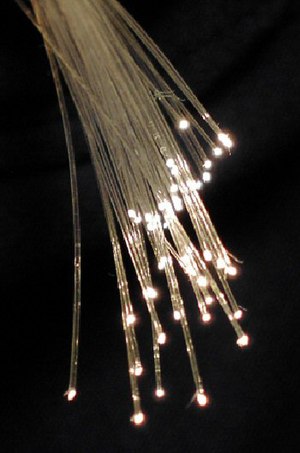DOWNLOAD ALL THE MEMS LECTURE NOTES FROM THE LINKS GIVEN BELOW
THESE LECTURE NOTES CONTAIN COMPLETE INFORMATION ABOUT MEMS.
Introduction: history of MEMS, market for MEMS, overview of MEMS processes, properties of silicon, a sample MEMS process.
Handouts: class syllabus, silicon crystal origami, Petersen’s, Feynman’s.
Lecture Notes: Lecture 1. |
| Basics of Microtechnology: definitions and terminology, a sample process, lithography and etching.
References: “There’s Plenty of Room at the Bottom” by Richard Feynman (reprinted in Journal of Microelectromechanical Systems, March 1992); “Silicon as a Mechanical Material” by Kurt Petersen (Proceedings of the IEEE, May 1982).
Lecture Notes: Lecture 2. |
This is a preview of COMPLETE LECTURE NOTES ON BASICS OF MICROELECTROMECHANICAL SYSTEMS(MEMS).
Read the full post (563 words, 1 image, estimated 2:15 mins reading time)
Lecture 1: [DOWNLOAD AS PDF]
Outline:
Image Formation
Inside the Camera – Projection
Inside the Camera – Sensitivity
Sensitivity and Color
Summary
Digital Image Formation
Sampling
Quantization
Summary
(R,G,B) Parameterization of Full Color Images
Grayscale Images
Images as Matrices
Homework I
Lecture 2: [
DOWNLOAD AS PDF]
Outline:
Summary of Lecture 1
Simple Processing – Transpose
Simple Processing – Flip Vertical
Simple Processing – Cropping
Simple Image Statistics – Sample Mean and Sample Variance
Simple Image Statistics – Histogram
Point Processing
Summary
Homework Rules
Homework II
Lecture 3: [
DOWNLOAD AS PDF]
Outline:
Summary of Lecture 2
Brief Note on Image Segmentation
Histogram Based Image Segmentation
Histogram Equalization
Summary
This is a preview of LECTURE NOTES ON BASICS OF DIGITAL IMAGE PROCESSING.
Read the full post (314 words, estimated 1:15 mins reading time)
1. X-ray imaging (Running time: 9min 55s.)
- Introduction and explanation of x-ray imaging using the analogy of the shadow cast by a net curtain in sunlight. Includes a series of x-ray pictures of: dislocated finger; fractured tibia and fibula; tibia repaired using a metal rod; lungs; lumbar spine; hairline fracture to the skull; skull complete with hearing aid (which the patient forgot to take off!!)
- Demonstration of a standard x-ray set including x-ray tube, aperture, film cassette and intensifying screens. Description includes two series of graphics: the first showing the detailed construction of an x-ray tube in its housing; the second, explaining how intensifying screens work.
- A barium meal examination being performed.
- Mammography being performed. Includes x-ray pictures of a breast with a tumour and one without (for comparison).
- Demonstration of a CT scanner. Includes a brief interview with a radiographer who interprets a set of brain scans which reveal a brain tumour.
2. Radiotherapy (Running time: 5min 9s.)
- Interview with a medical physicist who explains how radiotherapy treatments were planned for two case studies: cancer of the prostate and cancer of the breast.
- Demonstration of a cobalt 60 machine showing the aperture and wedges (used to shape the gamma ray field). Also shows the layout of the treatment suite (concrete walls a metre thick etc).
- Demonstration of a linear accelerator.
3. Ultrasound (Running time 9min 52s.)
- Introduction to ultrasound imaging by way of sonar aboard trawlers.
- Ultrasound examination of a pregnant woman. The doctor locates and talks about the baby’s heart, head, foot (it obligingly waggles its toes at the camera!), and spine.
- Ultrasound examination of the abdomen of a man. The doctor locates and talks about his gall bladder, liver and kidney. He shows how the machine is used to measure structures e.g. the length of the kidney.
- Close-up of the ultrasound probe, with a series of graphics to explain how it works.
- Introduction to Doppler ultrasound using the analogy of the change of pitch of the noise from a train as it passes. Includes simple graphic.
- Demonstration of Doppler ultrasound being used to “listen” to the blood flow in the presenter’s arm.
- Doppler ultrasound examination of the leg of a man with severe vascular disease. You can hear how blocked up his arteries are!
- Demonstration by a clinician of how ultrasound imaging and Doppler ultrasound are used together to measure and create images of blood flow.
4. Nuclear medicine (Running time 7min 32s.)
- Introduction, including delivery to the hospital radiopharmacy of molybdenum 99 from Canada.
- Demonstration by a radiopharmacist of how drugs are labelled with technetium 99m (derived from molybdenum 99). In particular, he shows how fluid is drawn from a technetium generator.
- Demonstration of how a gamma camera is used to image the head. Presenter shows and describes the lead collimator, sodium iodide crystal and photomultiplier tubes. Includes a graphic.
- Interpretation of several gamma camera images: a brain scan (normal); kidney scan (shows that one ureter is blocked); bone scans (one showing a kidney tumour which has spread to the spine; the other, confirming no secondary tumours in a young man part of whose femur had been removed due to bone cancer).
5. Magnetic Resonance Imaging (Running time 4min 31s.)
- Introduction, including the shattering of a tulip embrittled by immersion in liquid nitrogen and brief description of superconductivity.
- Demonstration of Magnetic Resonance Imaging scanner.
- Demonstration of how the MRI coil is made in the factory.
- Demonstration of how strong the magnetic field is by showing how a set of keys suspended on a wire are drawn towards the coil.
- Sequence of MRI images of a set of slices through a head, revealing detailed structure of brain, eyes etc.
- Demonstration of advanced techniques to show: firstly, a heart beating and; secondly, rotation of a 3D image of the blood supply to the head.
- Description of the latest compact MRI machine which enables heads, arms and legs to be examined more cheaply.
This is a preview of VIDEO LECTURE NOTES ON MEDICAL IMAGING MODALITIES.
Read the full post (667 words, estimated 2:40 mins reading time)


